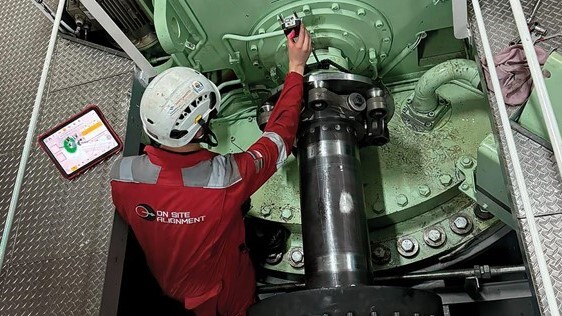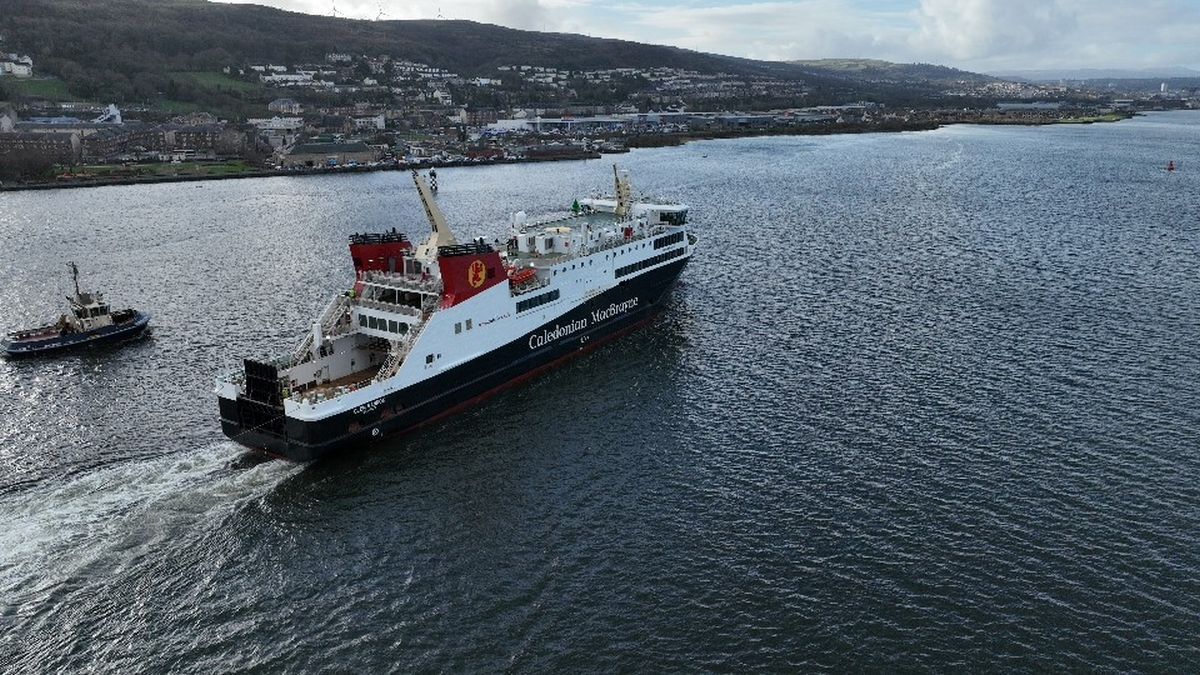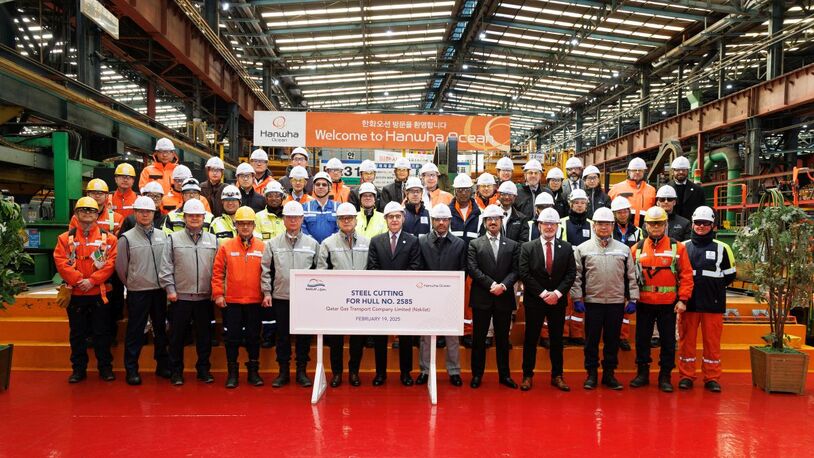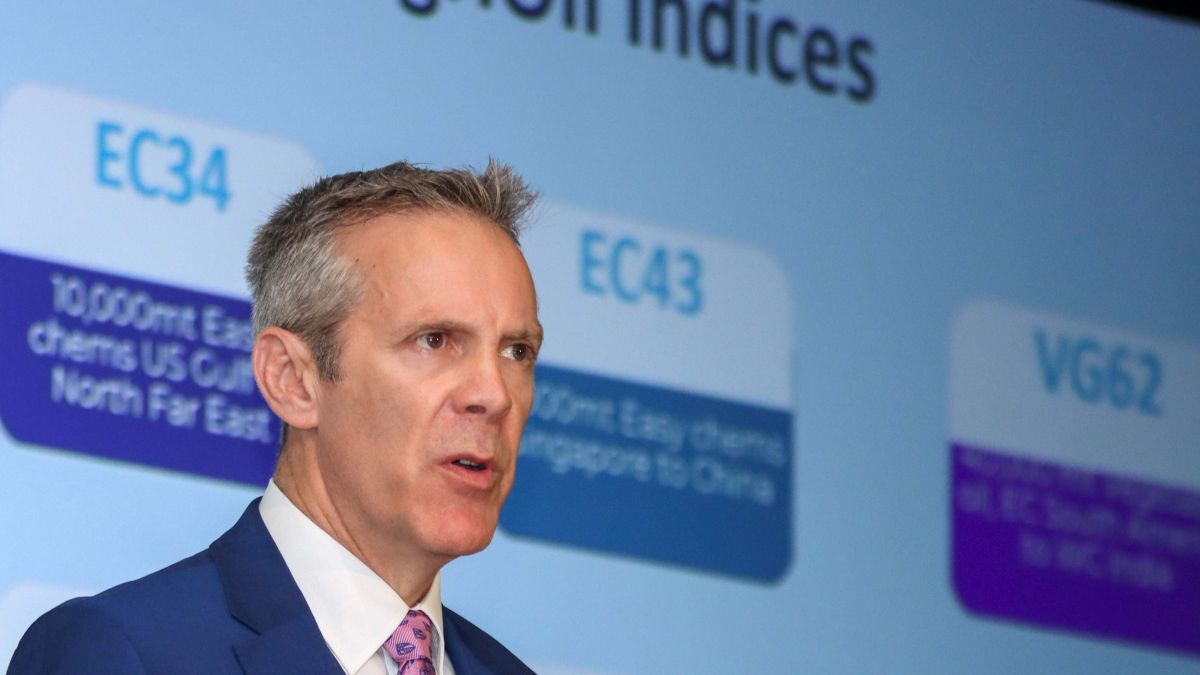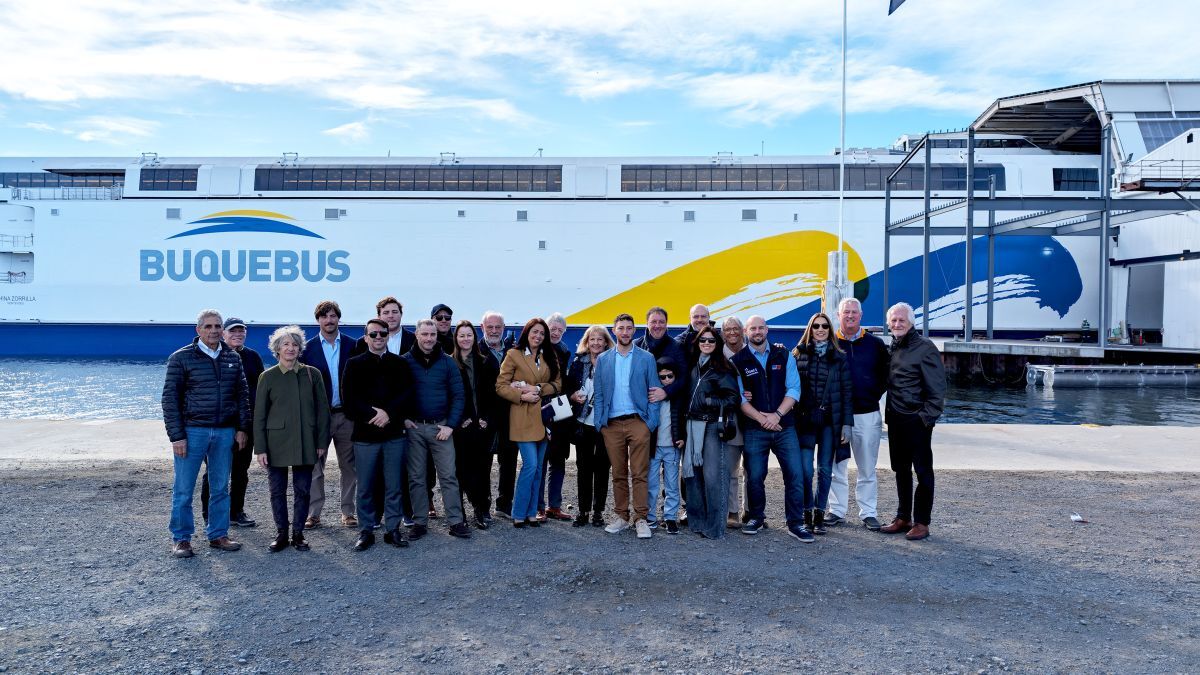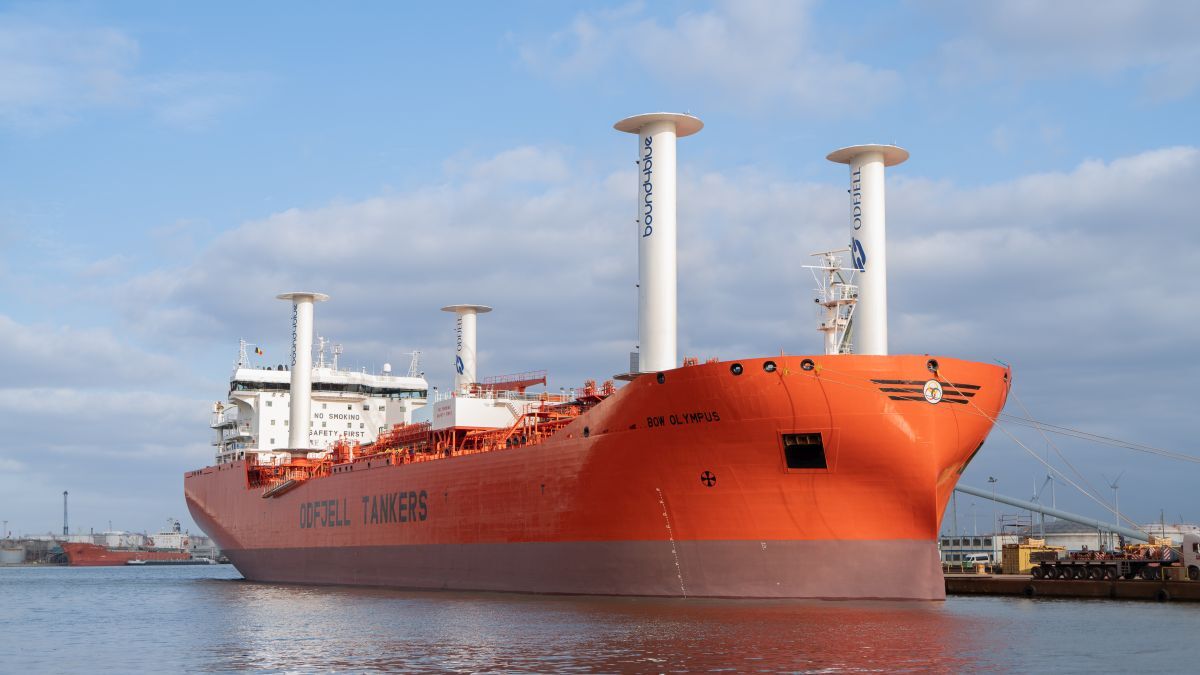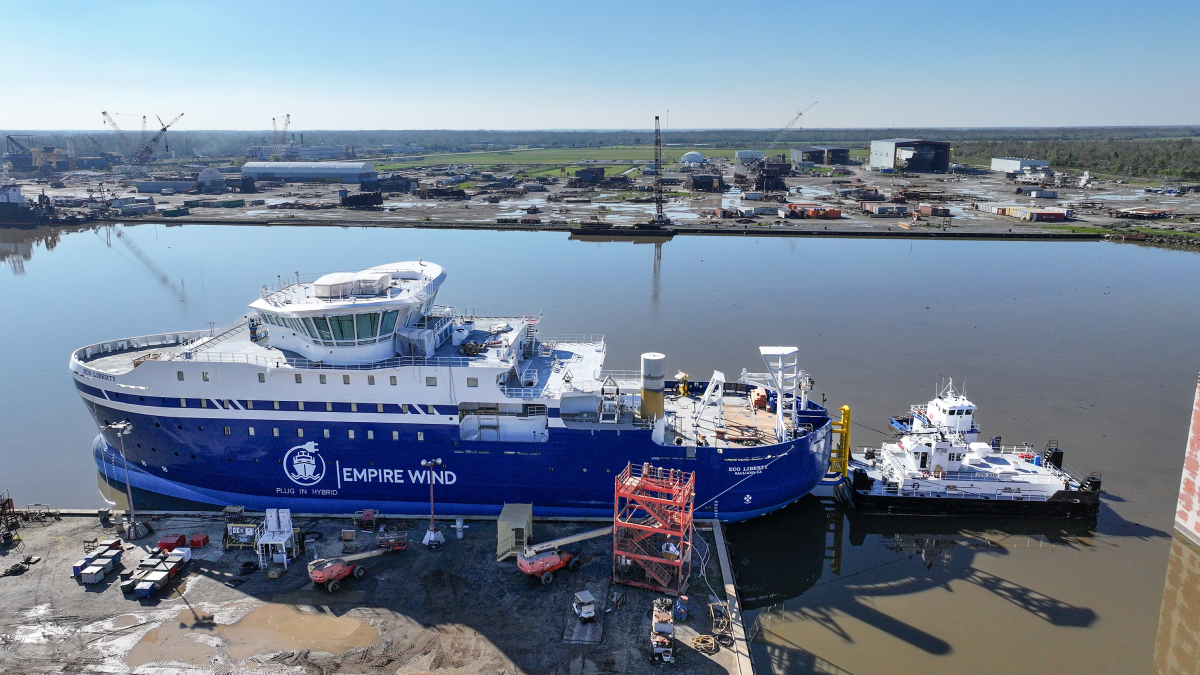Business Sectors
Events
Contents
Register to read more articles.
Glen Sannox: behind the scenes of the UK’s first LNG dual-fuel ferry
How CMAL is adapting to its first LNG dual-fuel ferry
Glen Sannox, which started operating in January this year, is the first vessel in the UK to have a dual-fuel propulsion system which can use both conventional marine gas oil and LNG.
Glen Sannox and its upcoming sister vessel Glen Rosa have been built by Scottish shipyard Ferguson Marine.
It was back in 2014 when Caledonian Maritime Assets Ltd (CMAL) started planning for Glen Sannox and its sister vessel. “We saw at that point LNG was an option for a transitional fuel,” says CMAL director of vessels Jim Anderson.
The ship is designed to operate at speeds between 14 knots and 17 knots, to operate on LNG or marine gas oil, and is designed to operate on several routes on the CMAL network.
The vessel has performed strongly since its delivery. Mr Anderson explains, “It has the flexibility to run on either LNG or diesel. The vessel has been running on LNG, which has been very successful. It was a first for us, we carried out a lot of research and the vessel operator arranged the required training for the crew. The vessel’s senior crew gained the necessary training and familiarisation with LNG as fuel on other LNG-fuelled vessels in operation, which was required to gain certification and meet MCA requirements.”
Trucks bring LNG to the vessel from Isle of Grain. The fuel is bunkered through a ship to shore hose. “It is a straightforward operation and the first time the procedure was carried out at the shipyard, it went well. The team involved had gained a lot of knowledge on LNG as a fuel and on the safety considerations and procedures leading up to the first bunkering, and with all of this, the first bunkering was straightforward,” Mr Anderson comments.
While currently trucks bring the LNG to the ferry, CMAL has long-term plans to put infrastructure in place to have a standalone tank at the port. “The trucks can fill the tank, and the crew can draw the gas from the tank when required, a much more flexible arrangement for bunkering,” says Mr Anderson.
The entire propulsion and LNG fuel system comes from Wärtsilä. There are two Wärtsilä dual-fuel 6L34 main engines and two 6L20 dual-fuel auxiliary engines, running generators. The LNG is stored at -160-170°C in a large 140-m3 tank in the belly of the ship and moved around in cryogenic pipes. Wärtsilä also provided the tanks, skids and bunker stations.
Mr Anderson says, “Having one system integrator was straightforward. Once the commissioning of the system was completed, the actual onboard side of taking fuel onto the ship was a huge milestone for all involved and went smoothly with the engines and onboard equipment.”
The Wärtsilä package includes two main engines and two auxiliary generators, with all four able to feed through the gearboxes and drive the CPP propellers. The ship can maintain service with one main engine out of service and is powered by two controllable pitch propellers. Each propeller is driven either by one medium speed dual-fuel engine or one electrical drive motor (PTI) via a double-in/single-out reduction gear and a shaft line. The electrical power for the electrical drive motors can be generated by the auxiliary gensets or from the PTO powered by the other main engine. The vessel can also operate in ‘boost’ mode with main engines and auxiliary engines providing power to the propellers.
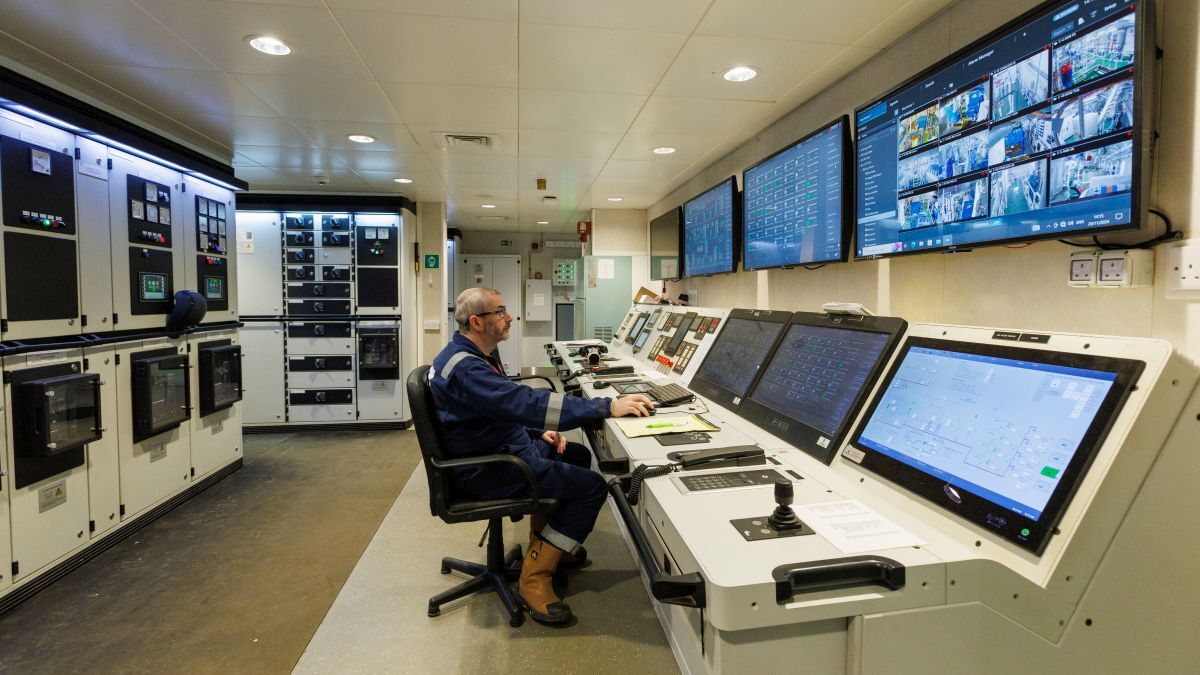
Mr Anderson praises the flexibility of the arrangement. “If one machine fails, you still have the other machine that can take over and the auxiliary generators. Also having the dual-fuel option means if we have a problem with the fuel system, we can switch fuels, and this gives us great redundancy for both fuels and engines.” Such flexibility is particularly important as the ferry is a lifeline service.
“You can run the engines in so many combinations and modes of operation, to have this type of configuration and number of mode of operations is a first for us,” Mr Anderson continues.
Other benefits include that environmental noise is decreased as enhanced noise reduction silencers have been fitted to engines and fans.
The bridge features port and starboard wing control units offering complete control of the ship while manoeuvring into harbour, and a glass floor panel allows the officers to see how close they are to the quay.
Mr Anderson singles out that the ship is very manoeuvrable, and extensive manoeuvring studies were carried out in the early days. “Three bow thrusters were installed, high efficiency flap rudders and a stern thruster, so the vessel is very manoeuvrable. The ship performs well, and we are delighted with this. It is particularly important to be manoeuvrable, as the vessel is servicing remote parts of Scotland where the weather conditions can get tough. A big consideration for all our ships is a high level of manoeuvrability and speed of response.”
Elsewhere, the ship is constructed and equipped so that people with reduced mobility can embark and disembark easily and safely. Passenger lounge facilities have been provided to meet the needs of disabled people. An accessible toilet on Deck 6 and a fully accessible toilet on Deck 5 are provided.
Four passenger lifts and one crew service lift are provided. The car deck, forward and aft ramps have been designed to allow a variety of heavy loads to be loaded and driven straight through the ship.
The ship has two double hoistable car decks each accommodating 24 cars. A garage height of 5.6 m allows motor homes to be loaded underneath the hoistable car decks when the hoistable car decks are in use. 5.1m free height is available under hoistable car decks when housed.
A first aid room is provided on the main passenger deck with an ambulance bed transfer room is provided on the vehicle deck.
There are two marine evacuation systems, each with a 150-person liferaft. There are eight 150-person liferafts and one 100-person liferaft. This package is completed with two fast rescue boats.
Mr Anderson says the ferry owner is looking at other alternative fuels in future projects. He points out, “Options are limited at the moment, and we know LNG is transitional. We are investigating options for our future ships.”
Asked about bioLNG, he says, “The challenge is the availability of the fuels - this is the biggest issue for all ship operators throughout the world. We see what the major engine builders are providing for fuel solutions, it is the availability of fuel that is the biggest issue, especially in remote parts of Scotland.”
While the LNG supplier for the vessel is UK based, it is not local to where the ferry operates. Mr Anderson comments, “Earlier, there were ambitions from fuel suppliers to have hubs in Scotland, but the demand is not there yet, so the supply is not there.”
Looking at the CMAL fleet as a whole, the company is looking at battery technology for its smaller ferries and placed a contract with Remontowa Shipbuilding in March for seven all-electric ferries.
For the larger vessels, CMAL is considering laying out newbuilds so they are capable of being retrofitted for future fuels. Indeed, a core part of the company’s environmental strategy is the layout of new ships is designed to support the future transition to alternative fuels. “It is a key objective for us to invest and be ready for these technologies. The biggest challenge is the availability and supply of fuels,” Mr Anderson says.
Meanwhile, back to Glen Sannox. CMAL will be collecting and using data to make public the emissions reduction the ferry is offering.
“Feedback from passengers has been fantastic,” Mr Anderson sums up.
Sign up for Riviera’s series of technical and operational webinars and conferences:
- Register to attend by visiting our events page.
- Watch recordings from all of our webinars in the webinar library.
Related to this Story
Events
Maritime Environmental Protection Webinar Week
The illusion of safety: what we're getting wrong about crews, tech, and fatigue
Responsible Ship Recycling Forum 2025
© 2024 Riviera Maritime Media Ltd.

